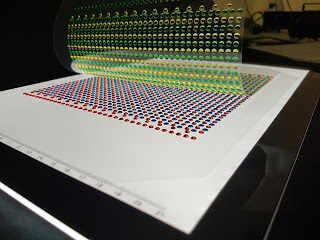Changing the face of 3D Printing, Biotech, and Additive Manufacturing with Dr. Shweta Agarwala
Interviewed by Cecillia Wong Dr. Shweta Agarwala is a research scientist at Singapore Centre for 3D Printing in Nayang Technological University . She combines her multidisciplinary knowledge in electronics, materials science, manufacturing and bio-engineering for materials and new-age products catering to wearables, flexible electronics and bioelectronics. She is a leading innovator in 3D printing and additive manufacturing space for electronics and biotechnology. Cecillia: Tell us about some of the exciting things your lab is currently working on. Dr. Agarwala: My current research is directed towards bioprinting, bioelectronics, and printed electronics. My rendezvous with bioprinting is quite new and I am trying to understand how process control can be exploited to arrange multi-materials in desired architectures and incorporate additional functionalities with full spatial control. I am especially passionate about bioelectronics, an area of research that promises to bring two dis



